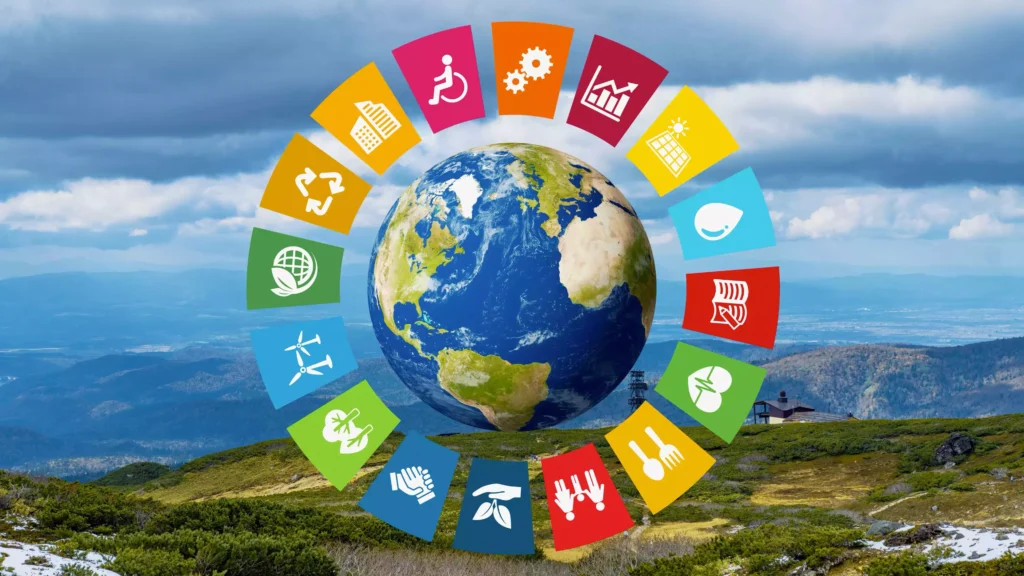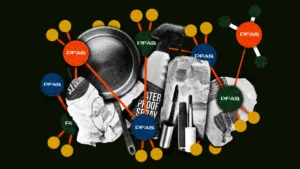The 2030 Agenda for Sustainable Development, adopted by all United Nations Member States in 2015, provides a shared blueprint for peace and prosperity for people and the planet, now and into the future. At its heart are the 17 Sustainable Development Goals (SDGs), an urgent call for action by all countries – developed and developing – in a global partnership.
While the challenges we face in achieving these goals are significant, it’s crucial to underscore the immense positive impact the SDGs are designed to have on our world. These goals are not merely aspirational; they represent a roadmap to a more equitable, healthy, and sustainable future. Let’s delve into the transformative potential of the SDGs across the key dimensions of economic, health, and social responsibility.
Economic Transformation: Building a Prosperous and Inclusive World
The SDGs are not just about social development; they are intrinsically linked to economic prosperity. Several goals target the fundamental drivers of economic growth, but with a crucial emphasis on inclusivity and sustainability:
SDG 8: Decent Work and Economic Growth: This goal aims to promote sustained, inclusive, and sustainable economic growth, full and productive employment, and decent work for all. Imagine a world where everyone has access to fulfilling jobs, fair wages, and safe working conditions. This would unleash human potential, boost productivity, and create more robust and resilient economies.
SDG 9: Industry, Innovation, and Infrastructure: By fostering resilient infrastructure, promoting inclusive and sustainable industrialization, and encouraging innovation, this goal seeks to build the foundation for economic progress. Improved infrastructure facilitates trade, connects communities, and enhances productivity. Sustainable industrialization creates jobs and drives economic diversification, while innovation leads to new technologies and solutions that can address global challenges.
SDG 12: Responsible Consumption and Production: This goal addresses a critical aspect of sustainable economic development: resource efficiency. By promoting sustainable consumption and production patterns, we can decouple economic growth from environmental degradation. This means minimizing waste, maximizing resource use, and encouraging businesses to adopt sustainable practices, leading to a more circular economy and long-term economic stability.
The positive economic impacts of achieving these goals are far-reaching. They include:
Increased productivity: A skilled and healthy workforce, coupled with efficient infrastructure, drives economic output.
New market opportunities: The shift towards sustainable production and consumption creates new markets for green technologies and products.
Reduced inequality: Inclusive economic growth ensures that the benefits of progress are shared by all, leading to more equitable societies.
Long-term stability: Sustainable economic practices minimize environmental risks and ensure the availability of resources for future generations.
Healthier Populations: Investing in Well-being for All
The SDGs place a significant emphasis on improving global health outcomes, recognizing that healthy populations are essential for both social and economic development.
SDG 3: Good Health and Well-being: This goal aims to ensure healthy lives and promote well-being for all at all ages. Achieving this goal means reducing maternal and child mortality, combating epidemics like HIV/AIDS, tuberculosis, and malaria, and addressing non-communicable diseases like cancer and heart disease. It also includes improving mental health, preventing substance abuse, and ensuring universal health coverage.
SDG 6: Clean Water and Sanitation: Access to clean water and sanitation is fundamental to human health. This goal seeks to ensure availability and sustainable management of water and sanitation for all. Achieving it would drastically reduce the burden of waterborne diseases, improve hygiene, and enhance overall well-being.
The positive health impacts of achieving these goals are profound:
Increased life expectancy: Addressing major diseases and improving access to healthcare will lead to people living longer and healthier lives.
Reduced disease burden: Preventing and treating diseases will reduce human suffering and improve quality of life.
Improved productivity: A healthy population is more productive, contributing to economic growth.
Stronger societies: Healthy individuals are better able to participate in their communities and contribute to social development.
Social Responsibility: Building Inclusive and Just Societies
The SDGs also champion social responsibility, aiming to create more inclusive, just, and peaceful societies.
SDG 1: No Poverty: Ending poverty in all its forms everywhere is the overarching goal of the 2030 Agenda. Achieving this goal means ensuring that everyone, everywhere, has access to basic necessities like food, water, shelter, and social protection.
SDG 4: Quality Education: This goal seeks to ensure inclusive and equitable quality education and promote lifelong learning opportunities for all. Education is a powerful tool for social mobility, empowerment, and reducing inequality.
SDG 5: Gender Equality: Achieving gender equality and empowering all women and girls is crucial for social progress. This goal seeks to eliminate all forms of discrimination against women and girls and ensure their equal participation in all spheres of life.
SDG 10: Reduced Inequalities: This goal aims to reduce inequality within and among countries. This means addressing income disparities, promoting social inclusion, and ensuring that everyone has equal opportunities, regardless of their background.
SDG 16: Peace, Justice, and Strong Institutions: Promoting peaceful and inclusive societies, providing access to justice for all, and building effective, accountable, and inclusive institutions at all levels are essential for creating stable and thriving societies.
The positive social impacts of achieving these goals include:
Reduced poverty and hunger: Ensuring that everyone has access to basic necessities and social protection.
Empowered individuals: Education and gender equality empower people to reach their full potential and participate in society.
More inclusive societies: Reducing inequalities and promoting social inclusion creates a sense of belonging and strengthens social cohesion.
Peace and stability: Just and accountable institutions, coupled with reduced inequality, contribute to more peaceful and stable societies.
The Interconnectedness of the SDGs
It is important to emphasize that the SDGs are interconnected. Progress in one area often reinforces progress in others. For example, investing in education (SDG 4) can lead to economic growth (SDG 8), reduced inequality (SDG 10), and improved health (SDG 3). Similarly, addressing climate change (SDG 13) is crucial for protecting vulnerable populations (SDG 1), ensuring food security (SDG 2), and preserving ecosystems (SDG 15).
Conclusion: A Call to Action
The Sustainable Development Goals offer a bold and ambitious vision for a better future. Their successful implementation promises to transform our world, leading to stronger economies, healthier populations, and more just and equitable societies. While challenges remain, the potential rewards of achieving the SDGs are immense.
It is imperative that governments, businesses, civil society, and individuals work together to accelerate progress towards these goals. This requires:
Increased investment: Mobilizing financial resources from all sources to fund SDG-related initiatives.
Policy coherence: Aligning national policies with the SDGs and ensuring that different sectors work together effectively.
Innovation and technology: Harnessing the power of technology to develop new solutions and accelerate progress.
Partnerships: Fostering collaboration between different stakeholders to leverage expertise and resources.
Accountability and monitoring: Tracking progress towards the SDGs and holding all actors accountable for their commitments.
The SDGs are not just a set of goals; they are a call to action. Let us rise to the challenge and work together to create a world where everyone can thrive in peace, prosperity, and dignity. The future of our planet, and the well-being of generations to come, depends on it.





